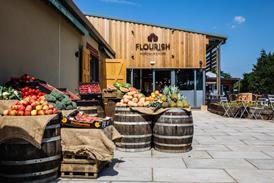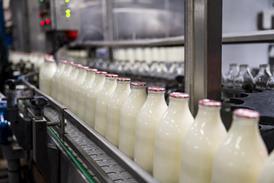- Home
- Retail & Wholesale
-
Products & Suppliers
- Back to parent navigation item
- Products & Suppliers
-
Product Categories:
- Back to parent navigation item
- Product Categories:
- Alcoholic drinks
- Bakery
- Cereals & breakfast
- Cheese
- Chicken & poultry
- Chocolate
- Confectionery
- Crisps, nuts & snacks
- Dairy
- Fish
- Fresh produce
- Frozen
- Household
- Meat
- Own Label
- Sauces & condiments
- Seasonal
- Soft drinks
- Vaping
- Vegan & plant-based
- World foods
- Suppliers
- People
- Reports & Data
-
Topics A-Z
- Back to parent navigation item
- Topics A-Z
-
Popular topics:
- Back to parent navigation item
- Popular topics:
- Cost of living crisis
- Crime
- Deposit Return Schemes
- Finance
- Government & Regulation
- Health
- Inflation
- Loyalty
- Marketing
- Mergers & Acquisitions
- New Product Development
- Sourcing
- Supply chain
- Sustainability & environment
- Technology
- Ultra Processed Foods
- Vaping
- A-Z all topics
- Content by type:
- Events
- Ask iA (beta)
- Subscribe now
Fighting on the frontline: the communities battling to save their high streets
By  Megan Tatum2019-02-28T11:22:00
Megan Tatum2019-02-28T11:22:00

Source: Unsplash
From Cambridge to Kilmarnock, we talk to the town centre teams fighting to revive their high street
There is a flipchart that sits in Gwen Barker’s East Ayrshire Council office. Scrawled across its pages are ideas on how to inject more life into Kilmarnock high street, a town that sits on the west coast of Scotland and which, last year, was named as one of the worst performing town centres in the UK. Among Barkers’ collection of ideas are a zipwire, a grafitti street and repackaging one area as a ‘cultural quarter.’
Four hundred miles away - and 250 spots higher on that same list - sits Cambridge, a tourist hub famed for its leafy parks and historic university colleges. Yet even there footfall is down and independents are struggling to pay the rent.
With two very different struggles but one common enemy in the form of ecommerce, what can these two towns tell us about the fate of the high street?
Already have an account? Sign in here
Already have an account? Sign in here






